Preserving, Promoting and Expanding Black Dance
An Interview with Denise Saunders Thompson
BY EMMALY WIEDERHOLT
The International Association of Blacks in Dance (IABD) was founded with the mission of preserving and promoting dance by people of African ancestry or origin and assisting and increasing opportunities for Black Artists through advocacy, audience development, education, funding, networking, performance, philosophical dialogue, and touring. President and CEO Denise Saunders Thompson shares why the association was started and how it’s grown, as well as some of the challenges facing Black Dance institutions.
Philadanco! at IABD 2019, Photo by Scott Robbins Geek
~~
Can you share a little of the history of IABD?
It began in 1988 with the First International Conference for Black Dance Companies. There were about 80 people at the gathering. It was called by Joan Myers Brown, who is the Artistic/Executive Artistic Director of Philadanco! Joan called the community together because she felt that the field at the time was not addressing the needs of her modern dance company. The field was very centered on ballet. She was on the board of directors at Dance/USA at the time, and her needs were not being addressed. So she left the board and called together her colleagues. That first conference eventually evolved into IABD. After the third conference in Denver, CO, the attendees voted to start the association, so the actual conference was a catalyst for the larger association.
After IABD was formed, there were five founding companies that really hosted the conference and took care of the organization and its constituents. These companies were Dallas Black Dance Theatre, Cleo Parker Robinson Dance, Philadanco!, Dayton Contemporary Dance Company, and Lula Washington Dance Theatre. These organizations have kept IABD going over the years to continue the mission of preserving and promoting dance of African ancestry and origin, as well as serving a particular sector called the Black Dance community and coming together to discuss issues like networking, touring, artistry, education, etc.
Thiossane at IABD 2019, Photo by Scott Robbins Geek
What does membership look like today?
Our membership is unique. We have an intergenerational membership body, and we span the dance field: We have artists, administrators, educators, students, researchers, scholars, even corporate partners. We are represented across the US in at least 40 of the 50 states, and globally in the Caribbean islands, Australia, the UK, Canada, Germany, Ghana, Senegal and Norway. We’re also able to bring together all types of dance. It’s not only traditional ballet, modern, tap and jazz, but also those styles and techniques that are codified or a fusion like Afro-Caribbean. We have 415 member companies, and another approximately 100 schools and institutions. With membership, the dancers within a company are included as members, so including the people within those companies and institutions, our membership is upwards of 5,000.
What are some of IABD’s resources you are most excited about?
One of my favorites is what we call the IABD Learning Magnet. It’s an educational workshop series for our next generation’s leaders. This year it was part of our annual conference and festival in Dayton, OH, and the focus of the series was on artistic and executive leadership. The program is for an artist or company leader who has specific questions around organizational structure and health. We bring them the opportunity to ask questions and receive guidance on how to support their organizations. We are working with P.S. 314, a consultation agency out of New York. The Learning Magnet is one of my favorites because we get to hear from our next generation’s leaders and the innovative ways they’re approaching their work. It’s got a great energy.
Hip Hop with Anthony Burrell and Katisha Adams at IABD 2019, Photo by Eric Smith
The 31st Annual International Conference & Festival of Blacks in Dance was this past January 22nd through 27th. What was the focus or emphasis this year?
The conference and festival is our staple event and is the gathering of the community. It’s an opportunity to have various conversations about our institutions, what’s happening in the field, funders, marketing strategies, collaborative opportunities, the whole gamut.
This year, we celebrated 50 years of the Dayton Contemporary Dance Company, which is based in Dayton, OH. DCDC, as it’s known, is one of the founding organizations of IABD. Jeraldyne Blunden was the company’s founder, though she passed away a few years ago. 50 years is a huge milestone for any business and certainly for a dance company in middle America. The theme of this year’s conference and festival, “Etched in Stone: Resilient through Time,” describes what the company has been through staying afloat. DCDC has been doing amazing work, and we wanted to support those efforts by bringing attention to it. We also wanted to bring attention to this part of the country and the fact that the arts live and breathe everywhere.
There were over 800 registered attendees for this year’s conference and festival, plus others dropped in from surrounding cities for a show, a panel or a master class. I would say we probably saw 2,000 to 3,000 people come through as a part of the IABD Conference and Festival.
Since taking over the leadership of IABD in 2010, what are some ways it’s grown?
When I came on board as the chair and executive director of IABD, it was a volunteer dance service organization. There was no staff. It was supported and had been supported by the founding member organizations and others who had presented the annual conference and festival. When I came in, it was mostly about maintaining and sustaining the work that the association was already doing.
Working with such amazing dance leaders in the field, I realized that this organization could be more. The potential for IABD to take its place in the field seemed very real to me, and it was something I wanted to push forward and make happen. It’s been a strategic process developing the organization and, as people say, “taking it to the next level.” But for me it was about more than taking it to the next level. It was about solidifying the association’s voice in the community. We hold such history and legacy in dance, and in particular people of African ancestry and origin who have played major roles in the styles, genres and techniques that have shaped this particular sector and ecosystem. For me, it’s about owning the narrative and making sure people realize the significance of those who have given of themselves to this field. We just recently lost Arthur Mitchell and Donald McKayle in the past year. These were pioneers who set the standards and tone for dance. They were significant to this organization and had a critical voice in the development of dance, particularly for Black Dance. It’s been about sustaining those legacies. That messaging continues to move us forward and will continue for generations to come.
Dayton Contempory Dance Company at IABD 2019, Photo by Scott Robbins Geek
What are some directions you’d like to expand IABD’s resources in the future?
There could be so much more. We received a significant grant from the Mellon Foundation two years ago, and that was life changing for IABD. With those dollars, we’ve been able to change the infrastructure of this organization from being volunteer-led for 29 years to an organization that has offices, a staff, is producing its own conference and festival, and has taken its rightful place in the conversation of the dance world. I see its future as being very bright.
What do you perceive are some of the greatest obstacles the Black Dance community faces?
We were just talking about this at the conference and festival during a convening of the 30 companies participating in our MOVE Initiative. Of course, there’s the usual conversation around funding, but we need to get our organizations funded with money they can actually use without it being restricted to a certain program. Unrestricted dollars to help general operating support is money that is very hard to access for our companies. We can do a million specially-funded projects, but that money stems from someone else’s idea, not from the dance company’s idea or art. How do we as a collective body begin to shift the focus of funders? We need to be a united force in educating funders about the changes we would like to see happen for our organizations, as well as the strategic measures we can do to start to create that change for ourselves.
What shifts would you like to see in opportunities and representation of Black Dance artists?
This is an ongoing conversation, and it’s related to touring. There are a couple organizations that are touring this country, and a lot of presenters feel like those particular companies represent the entire Black Dance sector, and that is not the case. The Black Dance sector comes in different shapes, sizes and colors, as cliché as that sounds, but it’s true. Black Dance is not one thing. Everyone’s art doesn’t look the same. It’s about getting the messaging out there that there are more than just a few organizations that represent Black Dance. That’s starting to happen. However, you’ll still see a couple organizations touring all over the world while there is an entire community that deserves the same opportunities to be engaged. At this point in time, those opportunities are afforded to those who have the most recognition. That is part of the narrative that IABD is pushing: There is more than just Alvin Ailey American Dance Theater and Dance Theatre of Harlem. There are other organizations besides those two that represent the field. Presenters are reluctant to move outside a zone of familiarity, but that’s part of their job to educate and bring new work to their audiences.
There are organizations like Jacob’s Pillow that have brought back their National Dance Presenters Forum. IABD had the opportunity to present to the next generation of presenters who knew nothing of our companies or this particular sector. It goes back to education. It’s important for presenters to be willing to listen and be engaged on how they can bring new, innovative and exciting companies to their communities beyond what they always do. We get stuck with: “We’ve already presented our Black dance company for the year.” There are thousands of us out there, and there’s more work to do bringing a broader and more diverse offering of dance companies to ticket buyers.
L’acadco at IABD 2019, Photo by Scott Robbins Geek
~~
To learn more, visit www.iabdassociation.org.

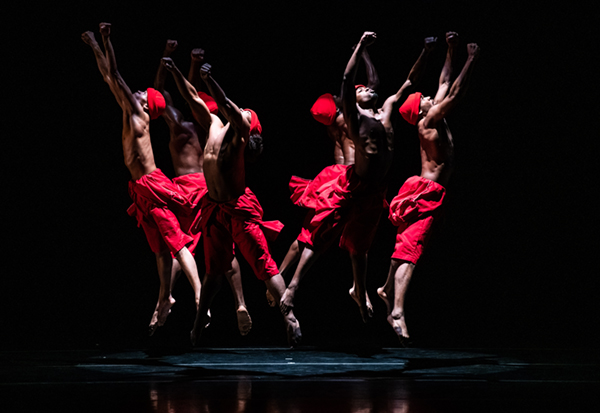
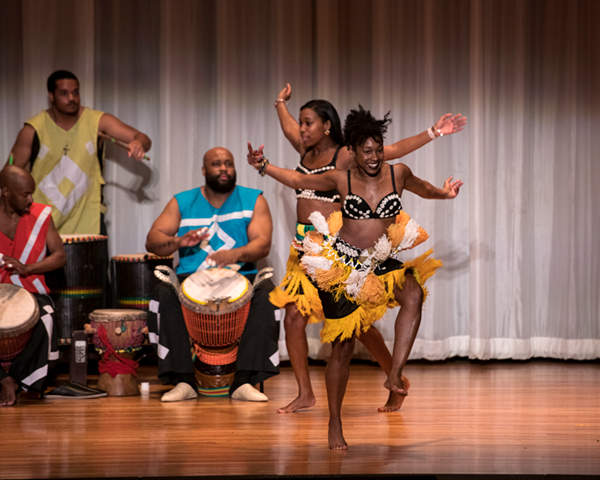
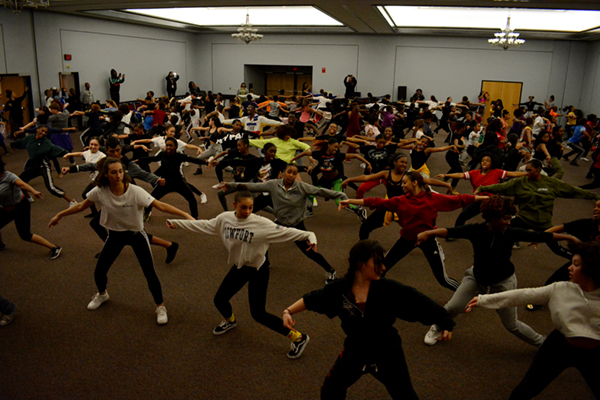
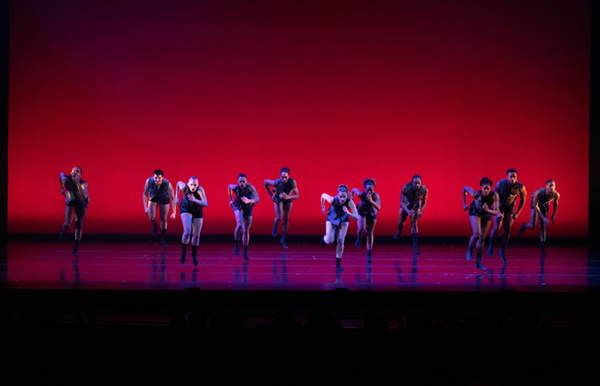
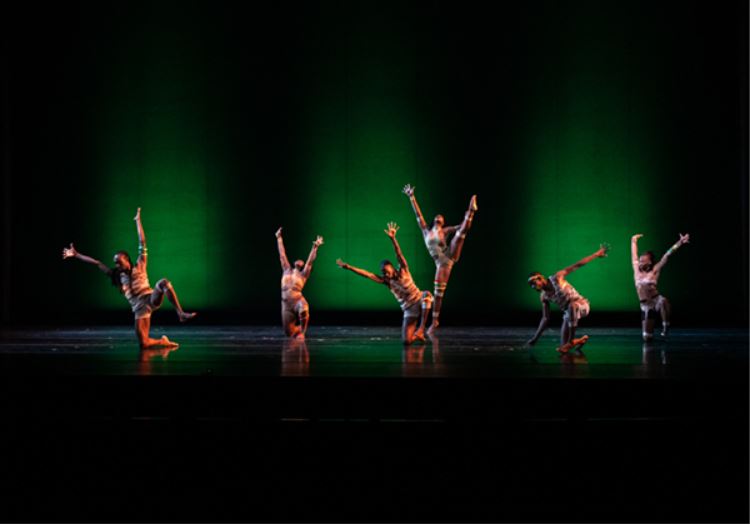
One Response to “Preserving, Promoting and Expanding Black Dance”
Im just learning about IABD. Im a Modern Dance Teacher and Choreographer doing Integrated Mobility Modern Dance, im an Amputee. In the New York area there are several Dance Companies doing this type of Work and honestly…though Dance NYC/DDA(Disability Dance Artistry) has great in gleaning moral support, Workshops, etc. The overall vibe for me as a Black Artist in this…leaves me wanting. I was actually Trained at Ailey’s, as a kid studied Dunham and i like how the Article expresses there’s more than just Alvin Ailey and DTH.
Comments are closed.